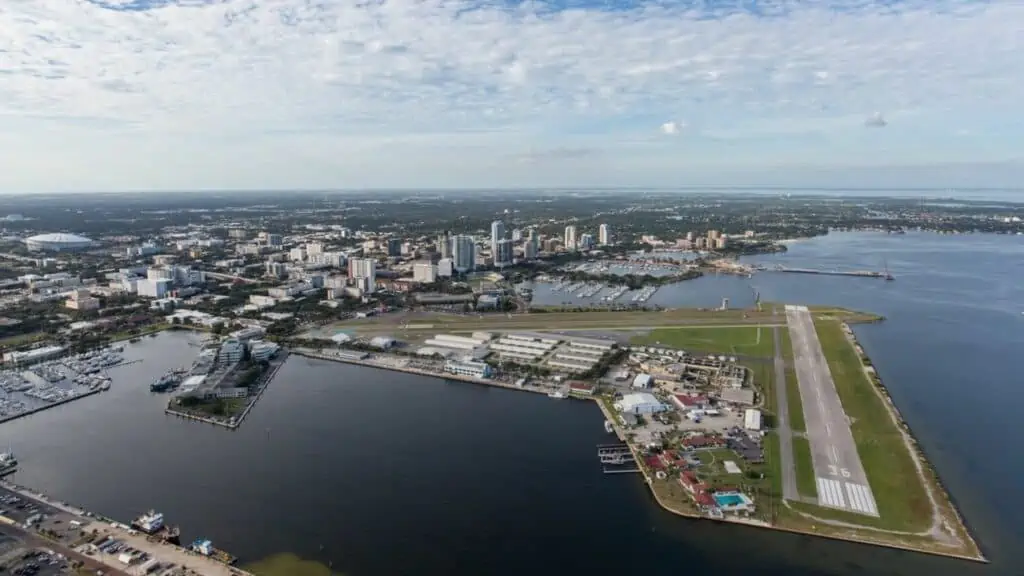Back in January, a social media post from newly-elected Mayor Ken Welch sparked a torrent of conversation about Albert Whitted Airport and the 119 acres of publicly-owned land on which it operates. In the post, Welch announced a study on the economic and community impact of the property, but gave no further information on why it was commissioned, or what he may have in mind.
In response to questions from the media, Welch held a press conference last Friday to address his thoughts on the future of the waterfront property. Welch again confirmed that his administration has commissioned a study of the Albert Whitted property to “analyze the economic and community impact under its current use, as well as additional or alternative uses.” A study in 2018 measured the economic impact of the airport, but it focused more on the airport itself. This new study would refresh that information, Welch said, and then place it alongside the potential community and economic impact of other uses for the land.
ADVERTISEMENT
If the future of the property is something other than the airport, Welch made clear it would not be used for residential towers or condos. The most-talked about idea has been the possibility of building a waterfront stadium for the Tampa Bay Rays. While that option has been mentioned for years, it has come up again, and seemingly more seriously, during recent talks between the Rays and the City as they decide on the franchise’s future home after its lease at Tropicana Field runs out.
Other options suggested by the Mayor include an extension of the city’s waterfront parks, an expansion of USF and the Marine Science Center, or more space for the Maritime Defense Hub. Possible futures could potentially include multiple or even all of the discussed options.
Welch wants true measure of economic impact
Welch also brought up a key factor in measuring potential impact: regulations on buildings surrounding the area that are tied to runway length. The primary economic impact revealed in the 2018 study, Welch said, was that a longer runway would mean nearby buildings could be taller. Those regulations, of course, impact USF, the Innovation District, and any potential nearby high rises or residential towers.
In a city that is beginning to grow up rather than out, that impact is not insignificant. The unsaid portion of that explanation was pretty straightforward: if there is no longer a runway at all, then there are no longer regulations for those neighborhoods to be restricted by.
Welch also made sure to emphasize that calling for this study doesn’t mean he or the City have specific plans for the property. They want to gather as much information as possible, have a conversation about the results, and make an informed decision on a property that holds significant value and meaning for the city.
“It is simply a process intended to ask the question: what should progress look like?” Welch explained. “We are focusing on charting a path for the most beneficial and equitable use for the citizens of St. Petersburg for the next 100 years.”
What to read next:
- St. Pete Museum of History turns 100, preps for 10,000-square-foot expansion
- Pia’s Trattoria opens new Veranda concept in Gulfport
- Nicko’s Pizza & Subs brings scratch-made pizzas and subs to 4th St South
- Where to get Girl Scout Cookies in St. Petersburg
ADVERTISEMENT






















